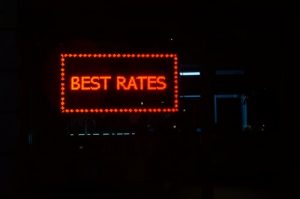You don’t need to get a mortgage pre-approved before heading home, but it’s a good idea, especially in a seller’s market where competition between buyers is intense. Unlike a prequalification, a pre-approval letter lends weight to your ad and shows sellers that you have the financial strength to secure their listing.
To get pre-approved, you’ll need to look at your income, employment, assets, and debts, says Bob McLaughlin, former senior vice president, and director of residential mortgages at Bryn Mawr Trust in Bryn Mawr, Pa.
You probably already have a lot of recordings that you need or can easily access. “Document collection should not take more than a week depending on the lender’s requirements and whether you need documents from outside sources such as an attorney or the county government,” said Andy Kush, sales manager. of Patelco home loans. A credit union in Pleasanton, California.
Your lender may want more documents if you are self-employed or if your income comes from multiple sources. Also, be prepared to share information such as your Social Security number that you can use to review your credit reports and results. The name and address of your employer; and your rental date.
Income and employment
The documents required to verify income depend on how you are paid. This step is easiest for workers with a one-stop-shop paycheck who provides an annual W-2 form and who have little or no overtime or shift differences.
Tax Returns: Copies of both your most recent federal and state returns may be required.
Income:
W-2 Beneficiaries: Copies of the W-2 forms and your last two payslips. If your earnings include overtime, bonuses, or differential pay, you might need your last year-end payslip.
Self-Employed, Self-Employed, and Independent Contractors – Self-employed borrowers, including sole proprietorships, partnerships, and suburban businesses, need a year-to-date cumulative income statement and two-year records, including the Form 1099 that you used to report the income. and explain the taxes.
Real estate income. Document the rental income, address, lease, and current market value of a rental property when you use that income to qualify for a mortgage.
Were
Bank Statements – Copy 60-day bank statements for each account whose assets you use to qualify for the mortgage. Also, add blank pages with instructions.
Pension and brokerage accounts: two months of IRA statements, investment accounts (stocks and bonds), and certificates of deposit. The latest 401 (k) quarterly statement shows the purchased balance. As with bank statements, including all pages, including blank pages.
Debt
Monthly Debt Payments – Lenders look at your payment obligations to calculate your debt-to-income ratio. List all monthly debt payments, including student loans, car loans, mortgages, and credit cards. Include the name and address of each creditor, their account number, the loan balance, and the minimum payment amount. If you don’t have a credit history, utility bills or records of other recurring payments can be used to qualify for a mortgage.
Home Debt: If your current property is mortgaged, secure your last bank statement with the loan number, monthly payment, loan balance, as well as the name and address of the lender and the policy statement page.
Other records
Rent: Tenants are required to provide proof of payment for the past 12 months and landlord contact information for the past two years.
Divorce: Prepare your divorce decision and any court order regarding child support and child support, if applicable.



